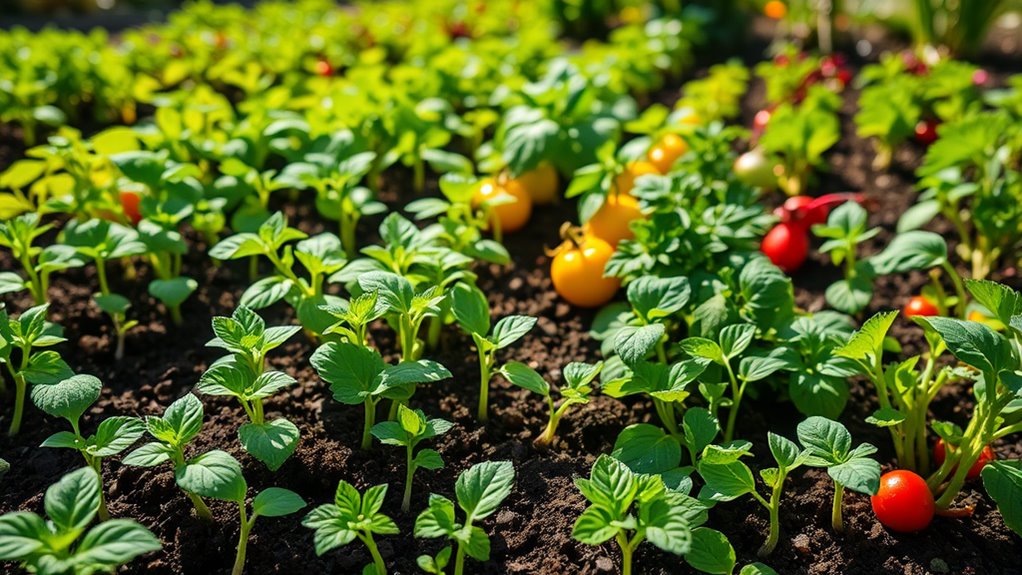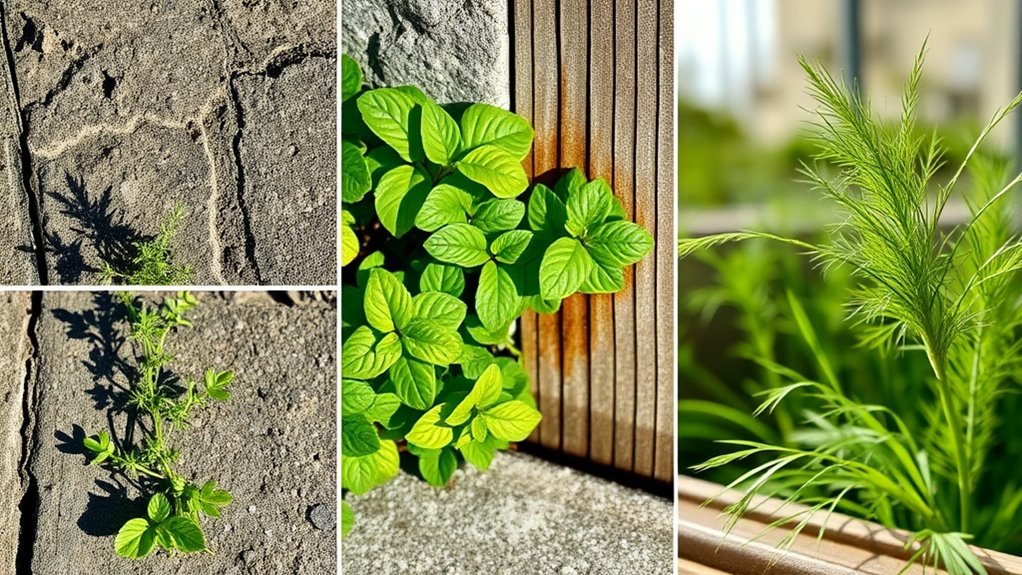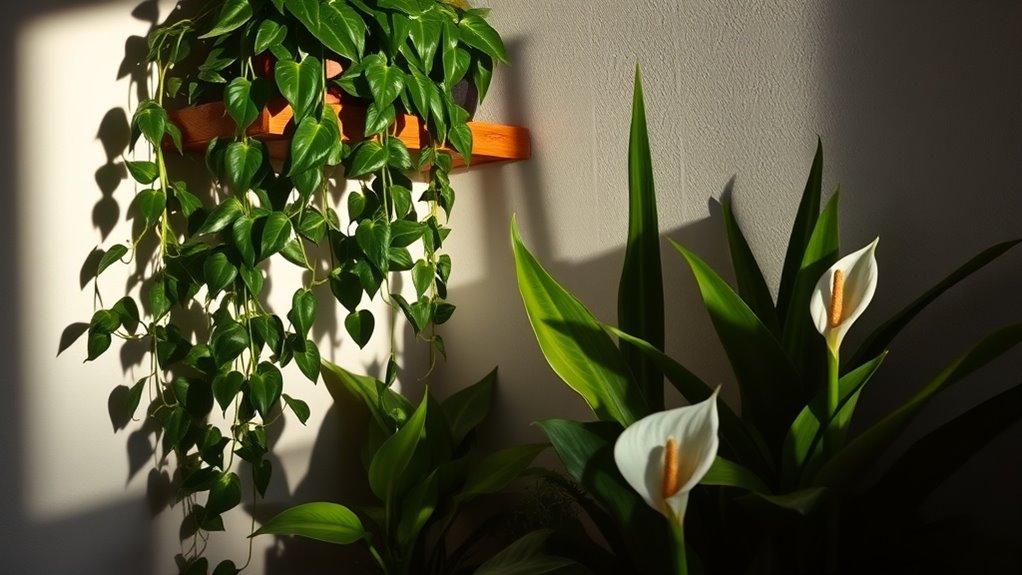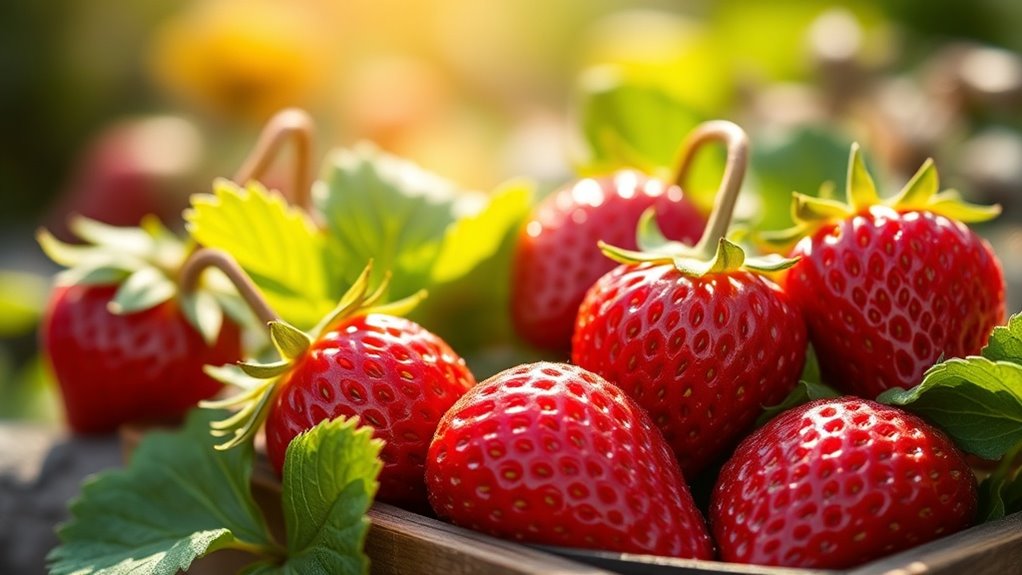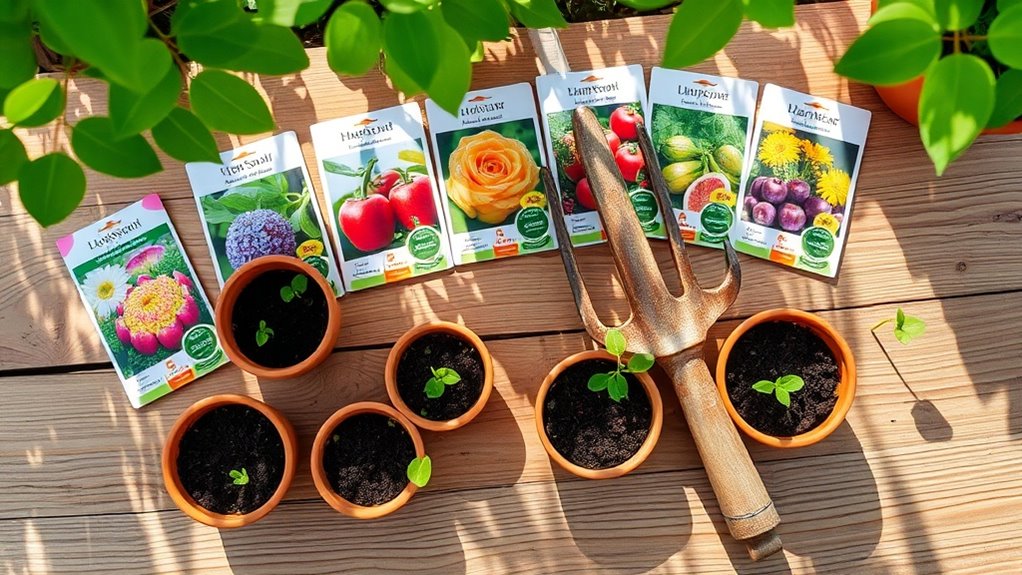What to Plant This Spring for a Bumper Harvest
As spring approaches, your garden offers a unique opportunity for a fruitful season. By selecting fast-growing vegetables, hardy herbs, and suitable fruits, you can maximize your yield. Understanding the importance of location and companion planting can also significantly impact your harvest. So, which specific crops should you focus on this spring to ensure a bountiful outcome? Let’s explore the best options for your garden.
Key Takeaways
- Choose a sunny garden location with at least six hours of sunlight and well-draining soil for optimal growth.
- Plant quick-growing vegetables like peas, lettuce, and radishes for an early harvest.
- Incorporate nutrient-rich spinach and sweet carrots that thrive in cooler spring temperatures.
- Select suitable herbs such as parsley, chives, and cilantro, which flourish in spring conditions.
- Consider planting fruits like strawberries and raspberries for a delicious, fresh snack during the season.
Choosing the Right Location for Your Spring Garden
Where should you plant your spring garden for the best results?
Start by selecting a location that receives at least six to eight hours of sunlight daily.
This sunlight is crucial for healthy plant growth.
Avoid shaded areas, as they hinder photosynthesis.
Additionally, ensure the soil drains well; soggy soil can lead to root rot.
If possible, choose a spot with wind protection to prevent damage to delicate seedlings.
Incorporate spring planting tips by testing your soil’s pH and nutrient levels, allowing for necessary amendments. Additionally, evaluate your soil’s health by observing its drainage and structure, which can indicate its ability to support plant growth.
A well-chosen location sets the foundation for a thriving and productive spring garden.
Top Vegetables to Plant in Spring
As you plan your spring garden, consider planting vegetables that thrive in the cooler temperatures of early spring. These crops can give you a head start on your harvest, ensuring fresh produce early in the season. Here are some top choices:
- Peas: Quick to germinate and perfect for trellising.
- Lettuce: Fast-growing and ideal for successive planting.
- Spinach: Nutrient-rich and resilient in cooler weather.
- Radishes: Short maturation time and easy to grow.
- Carrots: Sweet flavor develops best in cooler soil.
In addition to these crops, it’s important to consider planting crops that are suited for the spring season to maximize your yield.
Herbs That Thrive in Spring Conditions
What herbs can you plant in your spring garden that will flourish in the cooler temperatures? Here are some top choices that thrive in spring, providing flavor and aroma to your dishes.
| Herb | Ideal Temperature | Growth Habit |
|---|---|---|
| Parsley | 50-70°F | Biennial |
| Chives | 60-70°F | Perennial |
| Cilantro | 50-85°F | Annual |
| Dill | 60-70°F | Annual |
| Mint | 55-70°F | Perennial |
These herbs not only enhance your meals but also grow well in the cool, spring conditions, making them perfect for your garden. Additionally, you can easily grow herbs in water to keep them fresh and readily available for your culinary needs.
Fruits to Consider for a Spring Planting
Spring offers an excellent opportunity to plant a variety of fruits that can thrive in the season’s mild temperatures.
By choosing the right fruits, you can enjoy a bountiful harvest later in the year.
Consider these options for your spring planting:
- Strawberries: Fast-growing and perfect for containers.
- Raspberries: Hardy and excellent for fresh snacking.
- Blueberries: Require acidic soil and produce delicious berries.
- Apples: Choose disease-resistant varieties for better yields.
- Peaches: Love full sun and offer a sweet reward.
Additionally, strawberries can be grown in small spaces such as balconies or urban gardens, making them a versatile choice for any gardener.
These fruits not only enhance your garden’s diversity but also provide nutritious, homegrown options for your table.
Companion Planting for a Healthy Garden
Why is companion planting essential for a thriving garden?
It maximizes space and enhances plant health by pairing compatible species. For example, planting tomatoes with basil can deter pests and improve flavor. Similarly, marigolds can repel nematodes, benefiting nearby vegetables. This strategic arrangement not only boosts growth but also promotes biodiversity, creating a balanced ecosystem. By understanding plant relationships, you can reduce chemical pesticide use and improve soil health. Additionally, incorporating companion planting techniques can lead to healthier and more productive plants. When you plan your garden, consider these pairings carefully, as they can lead to increased yields and a more resilient garden. Embrace companion planting to cultivate a flourishing spring garden.
Essential Tips for Spring Garden Maintenance
As the growing season approaches, ensuring your garden is well-maintained becomes crucial for optimal plant health and productivity.
To keep your garden thriving, consider these essential maintenance tips:
- Regularly check soil moisture and adjust watering accordingly.
- Mulch around plants to retain moisture and suppress weeds.
- Prune dead or damaged branches to encourage new growth.
- Fertilize appropriately based on plant needs and soil tests.
- Monitor for pests and diseases, taking action promptly.
- Dedicate just 10 minutes a day to simple routine tasks that can significantly enhance your garden’s overall health.

